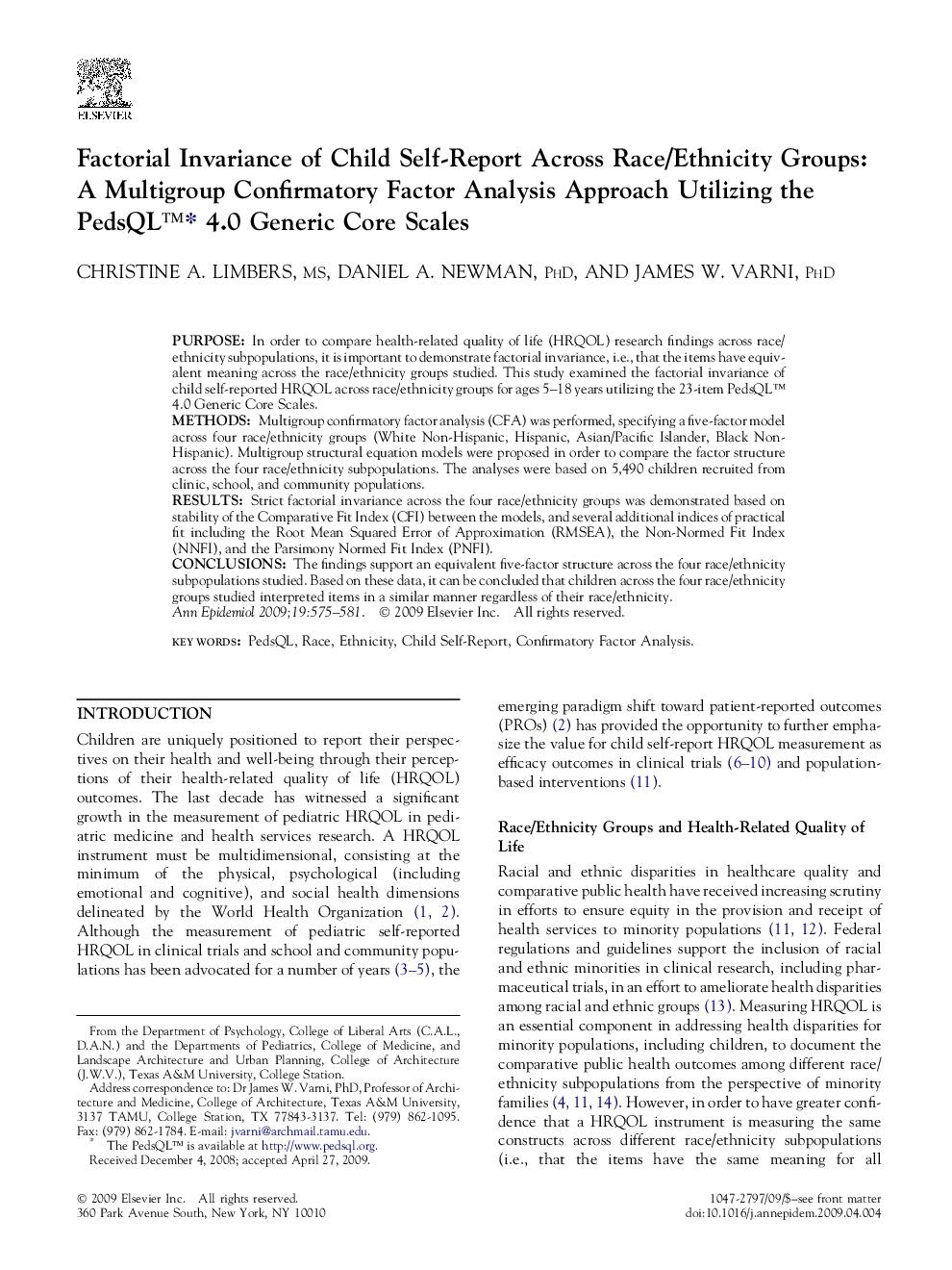| Article ID | Journal | Published Year | Pages | File Type |
|---|---|---|---|---|
| 3445025 | Annals of Epidemiology | 2009 | 7 Pages |
PurposeIn order to compare health-related quality of life (HRQOL) research findings across race/ethnicity subpopulations, it is important to demonstrate factorial invariance, i.e., that the items have equivalent meaning across the race/ethnicity groups studied. This study examined the factorial invariance of child self-reported HRQOL across race/ethnicity groups for ages 5–18 years utilizing the 23-item PedsQL™ 4.0 Generic Core Scales.MethodsMultigroup confirmatory factor analysis (CFA) was performed, specifying a five-factor model across four race/ethnicity groups (White Non-Hispanic, Hispanic, Asian/Pacific Islander, Black Non-Hispanic). Multigroup structural equation models were proposed in order to compare the factor structure across the four race/ethnicity subpopulations. The analyses were based on 5,490 children recruited from clinic, school, and community populations.ResultsStrict factorial invariance across the four race/ethnicity groups was demonstrated based on stability of the Comparative Fit Index (CFI) between the models, and several additional indices of practical fit including the Root Mean Squared Error of Approximation (RMSEA), the Non-Normed Fit Index (NNFI), and the Parsimony Normed Fit Index (PNFI).ConclusionsThe findings support an equivalent five-factor structure across the four race/ethnicity subpopulations studied. Based on these data, it can be concluded that children across the four race/ethnicity groups studied interpreted items in a similar manner regardless of their race/ethnicity.
